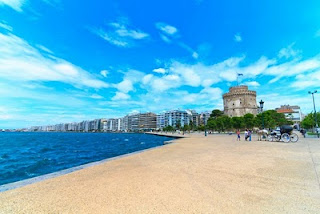According to The Guardian, tourism already accounts for about 18 percent of the economy in Greece. In the current economic crisis, the Greek government is making initiatives to try to lessen the impact. With approximately 52 percent of all visitors to Greece coming between July and September, priority is being given to encouraging alternative tourism which will bring visitors outside of the high season, such as agritourism and religious tourism. In order to generate foreign investment in the tourism sector Greece has taken steps to make this easier. In addition, landing and takeoff fees for aircraft have been waived and visa restrictions for non-EU citizens have been lifted.
Despite the ‘doom and gloom’ Crescent Moon can report that our contacts in Halkidiki tell us that it is business as usual for them. Not only tourists but Greeks have continued to happily holiday in the area. Perhaps because of the depressing news all the time, escapism is still high on the agenda. And what better place to escape to than the beautiful pine-clad hills and Blue Flag beaches of Halkidiki.
Around 2.335 million British nationals visit Greece every year (Source: Civil Aviation Authority). Why not join them and take advantage of beautiful scenery, excellent accommodation and great value for money.
Despite the ‘doom and gloom’ Crescent Moon can report that our contacts in Halkidiki tell us that it is business as usual for them. Not only tourists but Greeks have continued to happily holiday in the area. Perhaps because of the depressing news all the time, escapism is still high on the agenda. And what better place to escape to than the beautiful pine-clad hills and Blue Flag beaches of Halkidiki.
Around 2.335 million British nationals visit Greece every year (Source: Civil Aviation Authority). Why not join them and take advantage of beautiful scenery, excellent accommodation and great value for money.














